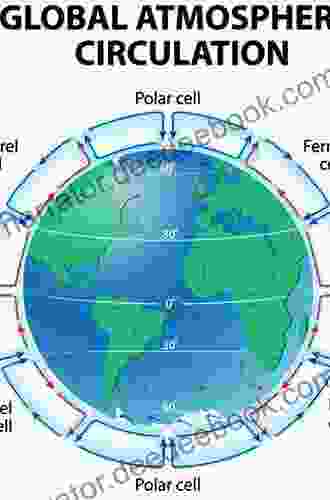Comprehensive Guide to Beach Management Principles and Practice

Beaches are dynamic and complex ecosystems that provide a wide range of benefits to coastal communities, including recreation, tourism, and storm protection. However, beaches are also constantly under threat from erosion, flooding, and pollution. To protect these valuable resources, it is essential to implement effective beach management practices.
Beach Management Principles
The following are some of the key principles of beach management:
5 out of 5
| Language | : | English |
| File size | : | 19067 KB |
| Text-to-Speech | : | Enabled |
| Screen Reader | : | Supported |
| Enhanced typesetting | : | Enabled |
| Word Wise | : | Enabled |
| Print length | : | 718 pages |
| Paperback | : | 95 pages |
| Item Weight | : | 5.6 ounces |
| Dimensions | : | 5 x 0.22 x 8 inches |
- Preserve and protect natural beach processes. Beaches are naturally dynamic systems, and it is important to allow them to function as such. This means avoiding any actions that will interfere with sediment transport or disrupt the natural flow of water.
- Manage beach access and use. Beaches are public resources, and it is important to ensure that everyone has access to them. However, it is also important to manage beach use to minimize impacts on the environment and wildlife. This may involve zoning beaches for different activities, such as swimming, fishing, and surfing.
- Protect beach infrastructure. Beaches are often home to infrastructure, such as roads, bridges, and buildings. It is important to protect this infrastructure from damage caused by erosion, flooding, and other hazards.
- Monitor and assess beach conditions. It is important to regularly monitor beach conditions to identify any potential threats or problems. This information can then be used to develop and implement appropriate management strategies.
Beach Management Practices
There are a variety of beach management practices that can be used to protect and preserve beaches. These practices can be divided into two main categories: structural and non-structural.
Structural Practices
Structural practices are physical structures that are built to protect beaches from erosion, flooding, and other hazards. These practices include:
- Seawalls: Seawalls are vertical walls that are built along the shoreline to protect against erosion caused by waves. They can be made of concrete, stone, or other materials.
- Groins: Groins are structures that are built perpendicular to the shoreline to trap sand and prevent erosion. They can be made of wood, concrete, or other materials.
- Jetties: Jetties are structures that are built at the entrance to harbors and inlets to protect them from erosion caused by waves and currents. They can be made of concrete, stone, or other materials.
- Breakwaters: Breakwaters are structures that are built offshore to protect beaches from erosion caused by waves. They can be made of concrete, stone, or other materials.
Non-Structural Practices
Non-structural practices are management practices that are used to protect beaches without the use of physical structures. These practices include:
- Beach nourishment: Beach nourishment is the process of adding sand to a beach to replenish the sand that has been lost to erosion. The sand can be obtained from offshore sources or from other beaches.
- Dune restoration: Dune restoration is the process of restoring or creating dunes to protect beaches from erosion caused by waves and wind. Dunes can be planted with vegetation to help stabilize them.
- Vegetation management: Vegetation management is the process of planting and maintaining vegetation on beaches to help stabilize them and prevent erosion. Vegetation can also help to filter pollutants and provide habitat for wildlife.
- Beach access management: Beach access management is the process of managing access to beaches to minimize impacts on the environment and wildlife. This may involve zoning beaches for different activities, such as swimming, fishing, and surfing.
Beach management is a complex and challenging undertaking. However, by implementing effective beach management practices, it is possible to protect and preserve these valuable resources for generations to come.
Image Descriptions
Image 1: A sandy beach with waves crashing on the shore. The beach is lined with dunes and vegetation.
Image 2: A seawall protecting a beach from erosion. The seawall is made of concrete and is several feet high.
Image 3: A groin trapping sand on a beach. The groin is made of wood and is several hundred feet long.
Image 4: A jetty protecting a harbor entrance from erosion. The jetty is made of concrete and is several thousand feet long.
Image 5: A breakwater protecting a beach from erosion. The breakwater is made of stone and is several hundred feet long.
Image 6: A beach nourishment project adding sand to a beach. The sand is being pumped from a barge offshore.
Image 7: A dune restoration project planting vegetation on a beach. The vegetation will help to stabilize the dunes and prevent erosion.
Image 8: A beach access management plan zoning a beach for different activities. The plan includes areas for swimming, fishing, and surfing.
5 out of 5
| Language | : | English |
| File size | : | 19067 KB |
| Text-to-Speech | : | Enabled |
| Screen Reader | : | Supported |
| Enhanced typesetting | : | Enabled |
| Word Wise | : | Enabled |
| Print length | : | 718 pages |
| Paperback | : | 95 pages |
| Item Weight | : | 5.6 ounces |
| Dimensions | : | 5 x 0.22 x 8 inches |
Do you want to contribute by writing guest posts on this blog?
Please contact us and send us a resume of previous articles that you have written.
 Novel
Novel Story
Story Reader
Reader E-book
E-book Paragraph
Paragraph Sentence
Sentence Shelf
Shelf Glossary
Glossary Bibliography
Bibliography Foreword
Foreword Synopsis
Synopsis Annotation
Annotation Footnote
Footnote Manuscript
Manuscript Tome
Tome Classics
Classics Library card
Library card Narrative
Narrative Biography
Biography Memoir
Memoir Encyclopedia
Encyclopedia Dictionary
Dictionary Thesaurus
Thesaurus Resolution
Resolution Catalog
Catalog Borrowing
Borrowing Archives
Archives Periodicals
Periodicals Research
Research Scholarly
Scholarly Lending
Lending Reserve
Reserve Journals
Journals Special Collections
Special Collections Interlibrary
Interlibrary Thesis
Thesis Dissertation
Dissertation Reading List
Reading List Theory
Theory Textbooks
Textbooks Alessandro Palmas
Alessandro Palmas Harry White
Harry White Jonathan Laverick
Jonathan Laverick Jonathan Micieli
Jonathan Micieli Karina Halle
Karina Halle Jacqueline S Ruiz
Jacqueline S Ruiz Sunny Weber
Sunny Weber Sophie Williamson Stothert
Sophie Williamson Stothert John Chapman
John Chapman Lynne D M Noble
Lynne D M Noble Mark Lutz
Mark Lutz Mark Rutkiewicz
Mark Rutkiewicz Jason Lief
Jason Lief Daniel Quinn Mills
Daniel Quinn Mills Donna M Binkiewicz
Donna M Binkiewicz Hari Walner
Hari Walner Anna Jensen
Anna Jensen Paul Wimsett
Paul Wimsett Jeff Goode
Jeff Goode Jeff High
Jeff High
Light bulbAdvertise smarter! Our strategic ad space ensures maximum exposure. Reserve your spot today!
 Clark BellFollow ·16.3k
Clark BellFollow ·16.3k Milton BellFollow ·14.2k
Milton BellFollow ·14.2k Edgar Allan PoeFollow ·19.8k
Edgar Allan PoeFollow ·19.8k Dillon HayesFollow ·6.4k
Dillon HayesFollow ·6.4k Eddie BellFollow ·8.1k
Eddie BellFollow ·8.1k Bryson HayesFollow ·12.2k
Bryson HayesFollow ·12.2k Ethan MitchellFollow ·14.7k
Ethan MitchellFollow ·14.7k Rick NelsonFollow ·9.3k
Rick NelsonFollow ·9.3k

 Abe Mitchell
Abe MitchellUnveiling the Urban Cheating Rich System: A Comprehensive...
In today's complex and ever-evolving urban...

 Preston Simmons
Preston SimmonsSelection, Processing, and Care of Reeds: A Comprehensive...
Reeds are essential...

 Rob Foster
Rob FosterKeeper of the Grail: The Youngest Templar
Prologue: A Sacred...
5 out of 5
| Language | : | English |
| File size | : | 19067 KB |
| Text-to-Speech | : | Enabled |
| Screen Reader | : | Supported |
| Enhanced typesetting | : | Enabled |
| Word Wise | : | Enabled |
| Print length | : | 718 pages |
| Paperback | : | 95 pages |
| Item Weight | : | 5.6 ounces |
| Dimensions | : | 5 x 0.22 x 8 inches |


















